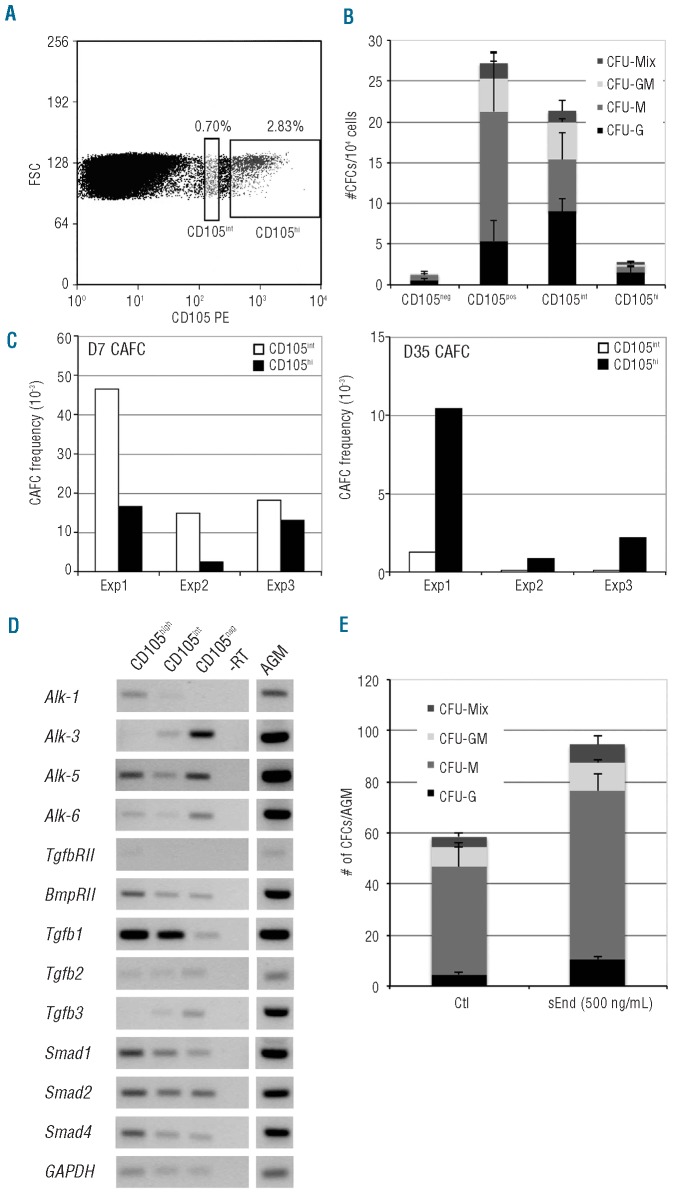Figure 3.
Subpopulations of CD105 expressing cells in the E11 mouse AGM and analysis of their hematopoietic potentials. (A) FACS analysis of the CD105-expressing cells in the E11 mouse AGM. A CD105int (0.70%) and a CD105hi (2.83%) population are clearly visible. (B) Compared clonogenic potential of the CD105 sub-populations. After sorting, the CD105neg, CD105pos, CD105int and CD105hi sub-populations were plated in methylcellulose medium. Hematopoietic colonies were scored after 14 days of culture. Data represent the mean ± SEM from 3–6 independent experiments. (C) Comparison between Day 7 and Day 35 CAFC frequency in the CD105int and the CD105hi sub-populations. Exp1, Exp2, Exp3 are 3 independent experiments. (D) RT-PCR analysis of the BMP/TGFβ pathway in the CD105 populations in the E11 AGM. The presence of several TGFβ-specific receptors and the strong TGFβ1 expression suggest that a TGFβ pathway is active in CD105-positive cells. Primers and size of amplification products are given in the Online Supplementary Table S1. (E) Role of a soluble form of endoglin (sEnd) on the clonogenic potential of AGM cells. A 3-day explant culture of E11 AGM was performed in the absence or in the presence of 500ng/mL of sEnd. After collagenase dissociation, cells were plated in methylcellulose medium, and hematopoietic colonies were scored after 11 days. Data represent the mean ± SEM from 3 independent experiments.

